2050 Carbon neutrality challenge
Komatsu is pushing for the goal of achieving substantive zero emissions of C02 by 2050. This effort is not only aimed at Komatsu’s production bases and product use processes, but also extends to the entire construction site of customers.
However, achieving carbon neutrality is by no means an easy path. Therefore, the concept established by Komatsu in order to achieve a decarbonized future as soon as possible is to provide customers with as many options as possible in terms of power sources and fuels. For example, electric vehicles, fuel cell electric vehicles, diesel electric vehicles, diesel engine vehicles using biofuels and e-fuel (synthetic fuel), and hydrogen engine vehicles.
Komatsu strives to promote decarbonization in any environment by adding more options to provide construction machinery suitable for customers’ on-site environments.
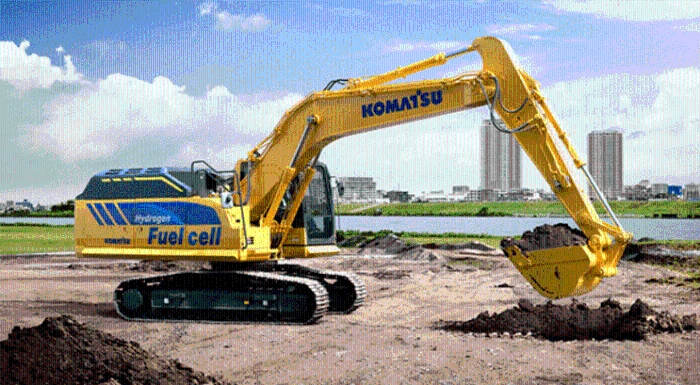
Hydrogen fuel cells to achieve zero emissions
Towards a decarbonized future, Komatsu has announced the launch of various environmentally friendly models that take environmental factors into consideration and the introduction of alternative fuel plants. As a new attempt in the world market, a concept machine of a medium-sized hydraulic excavator equipped with a hydrogen fuel cell has been developed. The concept machine is based on Komatsu’s medium-sized hydraulic excavator and is equipped with an advanced hydrogen fuel cell system.
At the same time, it combines Komatsu’s independently developed core parts and overall control technology to exert the same powerful excavation performance and high operability as engine-driven equipment, achieve zero emissions, and significantly reduce noise and vibration. A unique clean construction machine has been developed that only emits water and water vapor. This can be said to be a very meaningful development in Komatsu’s efforts to utilize hydrogen and achieve carbon neutrality.
Concept diagram of the structure of the hydrogen fuel cell system
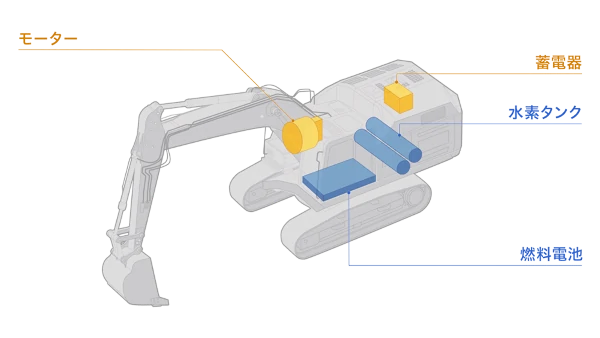

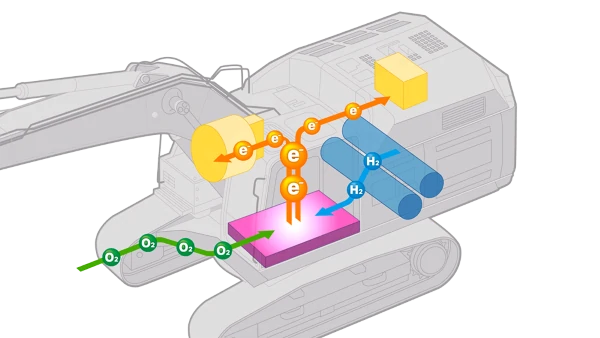
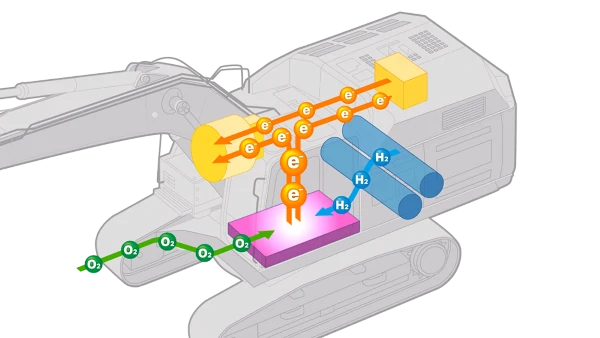
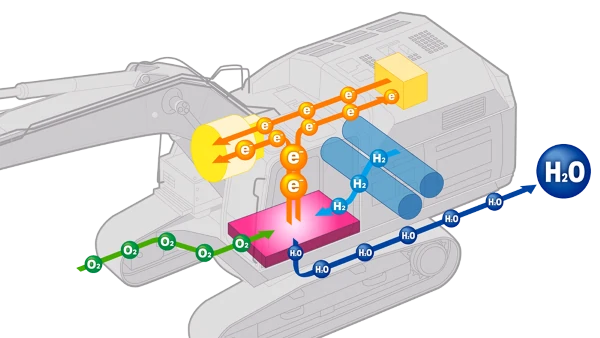
Accelerating the realization of Komatsu’s challenge
Komatsu believes that hydrogen, which has a high energy density and can be refueled in a short time compared to battery charging, is an effective choice for medium and large construction machinery, and will continue to promote research and development in the future. We will continue to take new steps towards the realization of future-oriented sites and strive to pass on a sustainable future to the next generation.


